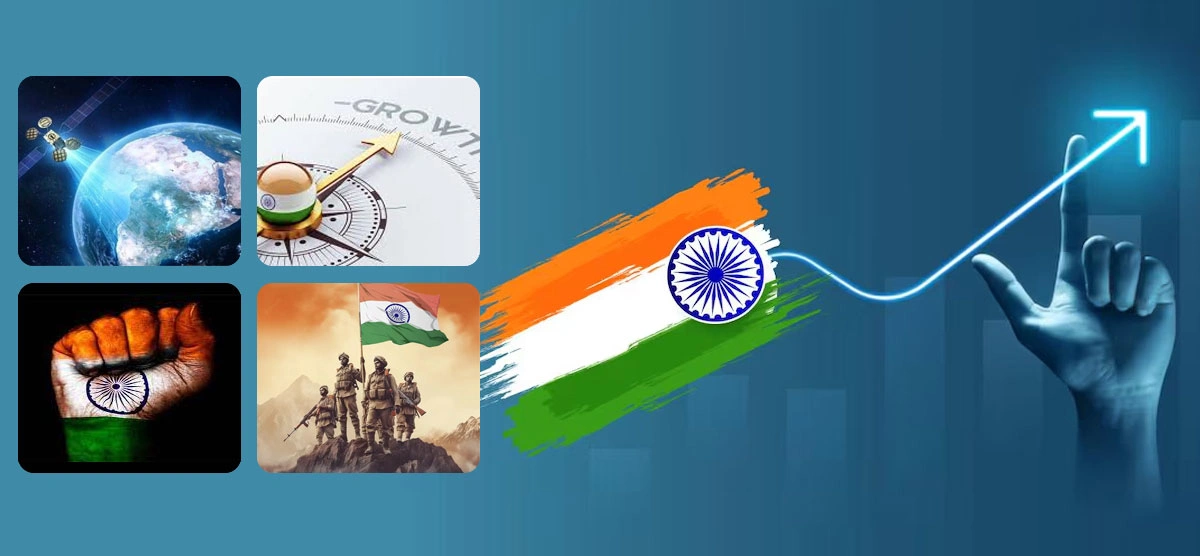For millennia, India has exemplified pluralism, intellectual depth and non‑aggression. From the Vedic hymns and Jain ahimsa to the Gandhian doctrine of satyagraha, India’s civilizational DNA is one of coexistence rather than conquest. Yet in today’s Western capitals most conspicuously in some American political circles, there persists a curious distrust of New Delhi. That this anxiety is unfounded is plain: India has never sponsored an act of terror on foreign soil, even as other erstwhile U.S. partners have. The disconnect between reality and perception, however, can and must be bridged.
Manufactured Apprehension
The roots of this phenomenon lie not in India’s policies, but in a narrative vacuum. When a nation’s own story goes untold, others will fill the silence with stereotypes: poverty, political volatility, and unfounded strategic threat. The result is that leaders who lack deep cultural literacy, regardless of their world‑view , come to regard India as a transactional “third‑world” partner at best, or a potential geopolitical rival at worst. President Donald Trump’s dismissive rhetoric about India’s status on multiple occasions, serves as one striking example of this broader mindset, a mindset that fails to account for the fact that India today administers the world’s largest democracy, sustains nearly 1.4 billion citizens, and projects stability in a tumultuous region.
Narrative as Infrastructure
In global affairs, narrative functions as a form of soft infrastructure: it shapes expectations, builds credibility, and conditions trust. Western diplomats and decision‑makers are influenced as much by media portrayals, academic discourse, and cultural programming as by official briefings. Without a coherent, compelling storyline, India cedes ground to half‑truths and outdated tropes. What is required, therefore, is a sustained, strategic campaign to seed India’s true identity among Western thought‑leaders.
A Five‑Pronged Cultural Strategy
- Articulate a Unified Vision of Modern India
India is more than subcontinental clichés. It is:- The world’s largest democracy, with a constitution that enshrines individual liberties.
- A tapestry of over twenty official languages and hundreds of faith traditions.
- A non‑aggressive power with no history of territorial expansion in modern times.
- A hub of innovation, from cost‑effective space missions to homegrown fintech solutions.
This vision must be distilled into a concise narrative framework, one that India’s missions, think tanks and public‑diplomacy arms can deploy in every forum.
- Elevate Cultural Diplomacy
Nations like Japan and South Korea have successfully exported soft power through cuisine, cinema and curated cultural centers. India must follow suit by:- Establishing “India Houses” in key capitals multidisciplinary spaces where policy dialogues, film screenings and philosophical workshops converge.
- Partnering with global streaming platforms to produce high‑quality documentary series that showcase India’s modern achievements alongside its ancient traditions.
- Funding endowed chairs in Indian studies at premier Western universities, ensuring a continuous pipeline of scholarship on India’s political economy, philosophy and social fabric.
- Train and Deploy Strategic Communicators
Cultural ambassadorship requires skillful interlocutors who can navigate Western media ecosystems and academic corridors without alienating audiences. India should invest in:- Diplomatic fellows who rotate through think tanks in Washington, London and Brussels.
- Training programs for journalists and public‑policy professionals to tell India’s story with nuance and credibility.
- Scholarship exchanges that bring Western opinion‑makers to India for immersive experiences in governance, entrepreneurship and civil society.
- Mobilize the Diaspora
The Indian diaspora in North America and Europe numbering over 30 million represents an underleveraged asset. Beyond remittances and business networks, diaspora leaders can:- Host roundtable briefings with parliamentarians, corporate CEOs and media editors.
- Serve on advisory councils that shape bilateral policy agendas.
- Champion India’s narrative in public forums, drawing on personal testimonies of professional collaboration and cultural affinity.
- Demonstrate Policy Consistency
Perception follows action. India’s foreign‑policy initiatives whether humanitarian assistance to neighboring states, peacekeeping deployments or climate‑change commitments must consistently reflect its professed values. By aligning policy with projection, India cements its reputation as a reliable, principled partner.
Toward a New Epoch of Trust
Shifting the Western leadership’s mindset is neither quick nor automatic. It demands patience, coordination across ministries and persistent engagement over years. But the payoff is profound: a world that no longer suspects India’s intentions, but instead seeks New Delhi’s counsel on issues from democratic resilience to sustainable development.
In the era of strategic competition, truth must be actively championed. India’s ethos of tolerance, non‑violence and intellectual exchange is not passive. It requires articulation. By treating narrative as a critical national asset, India can reshape perceptions in Western capitals, transforming manufactured apprehension into genuine respect and trust. The time to begin is now.


Add a Comment